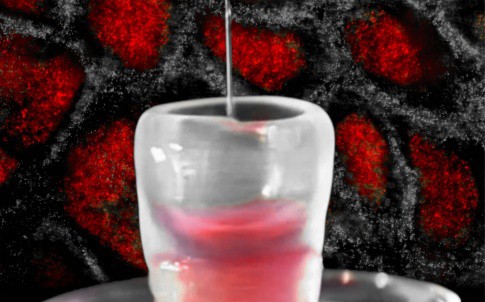More in
Netherlands team demonstrates rapid 3D bioprinting
Researchers at the University of Twente in the Netherlands have developed a 3d bioprinting technique to create structures with living cells.
Reported in a paper published by the American Association for the Advancement of Sciences (AAAS) the group’s so-called ‘in-air microfluidics’ technique enables rapid production of micro building blocks that could be used for repairing damaged tissue.

Microfluidics is typically used to refer to the chips with tiny fluidic channels used to manipulate drops of fluid with sizes between a micrometre and a millimetre.
Although these chips offer a broad range of possibilities, the speed at which droplets leave the chip is typically in the microlitre per minute range, which for clinical and industrial applications is not fast enough.
The 3d bioprinting technique offers a speedier alternative by manipulating fluids in air rather than microchannels.
The process uses two ‘jets’ of droplets, which are shot at each at speeds up to 1000 times faster than droplets from a microchip. By choosing jets containing different types of fluids that react, the 'collision' results in new materials.
Register now to continue reading
Thanks for visiting The Engineer. You’ve now reached your monthly limit of news stories. Register for free to unlock unlimited access to all of our news coverage, as well as premium content including opinion, in-depth features and special reports.
Benefits of registering
-
In-depth insights and coverage of key emerging trends
-
Unrestricted access to special reports throughout the year
-
Daily technology news delivered straight to your inbox










UK Enters ‘Golden Age of Nuclear’
The delay (nearly 8 years) in getting approval for the Rolls-Royce SMR is most worrying. Signifies a torpid and expensive system that is quite onerous...